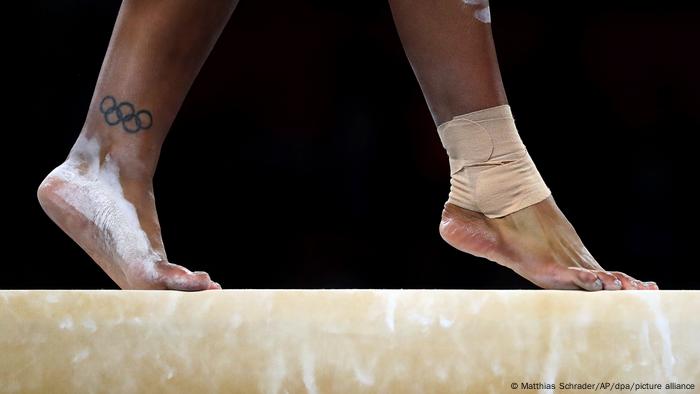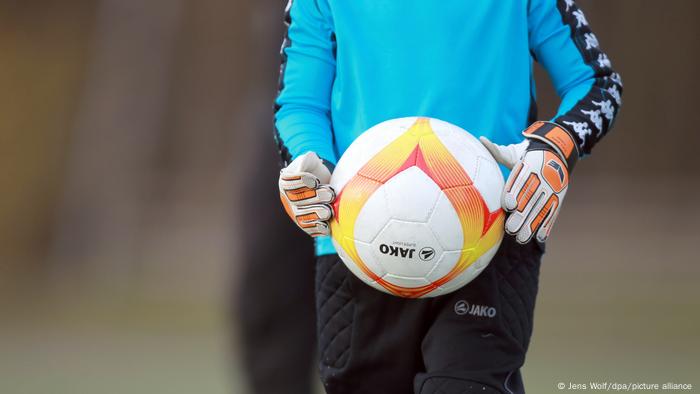There are no uniform and binding rules for sports organizations on how to prevent and sanction interpersonal violence. A safe sport code is now being worked on to help with this.

There should soon be a Safe Sport Code in gymnastics: The German Gymnastics Association is involved in the development of the set of rules
Interpersonal violence such as sexual harassment and abuse of power violates fundamental rights and endangers the integrity of sport. In order to counter this danger, more and more clubs and associations are trying to anchor measures against abuse and violence in sport in their regulations. The current density of regulations in the area of interpersonal violence is low. A “Safe Sport Code” is now being worked on at the Sports University in Cologne. The aim is to identify regulatory deficits and to close existing gaps in order to optimally protect athletes. Martin Nolte conducts research at the German Sport University in Cologne and is responsible for developing the Safe Sport Code.
Mr. Nolte, you have been commissioned to develop a Safe Sport Code. What is it about?
Martin Nolte:The project begins on April 1st and aims to create exemplary code against interpersonal violence, especially sexual violence and abuse of power. We have two top Olympic associations, the German Gymnastics Federation and the Equestrian Federation, as official cooperation partners. We also work with the German Basketball Federation.
Why is this code needed?
Nolte:Within the rules of the sports association, there are hardly any specific regulations against interpersonal violence. In order for sports organizations to be able to take effective action on the basis of their rules, specific rules are needed. This is comparable to the Anti-Doping Code, which has also created clear regulations in the area of combating doping. Criminal prosecution by the state judiciary is independent of this.
How urgent is the creation of a Safe Sport Code?
Nolte:Studies by my colleague Bettina Rulofs from the German Sport University have shown ever clearer evidence of the importance and extent of interpersonal violence over the past 15 years. Both are inversely related to the ability to be prosecuted and sanctioned by the sports associations on the basis of their own rules. This is an obvious mismatch. And that doesn't just affect our official cooperation partners in this project. This is to be remedied with the Safe Sport Code. It should be an exemplary set of rules that other associations can use as a guide.

The issue of sexual abuse in sport has come to the fore in the past 15 years
What exactly do you want to regulate?
Nolte:First of all, it is about prohibition norms, which behavior should be considered undesirable. In addition, there will be mandatory norms, such as reporting obligations for third parties who are not victims of violence but gain knowledge of the inspection.
Is there another focus?
Nolte:It is still about procedural provisions, for example for investigating and conducting hearings, for gathering evidence and possible sanctions. Judicial guarantees must be provided for. The focus is on the interests of the victims affected. But false suspicions or wrongly imposed sanctions could result in innocent lives being destroyed. It is therefore important to sufficiently consider all interests. But once again: The focus is on protecting those affected.
What is the difference between sports jurisdiction and criminal law?
Nolte: Different rules of evidence apply in sports law than in criminal law. This is often overlooked. The standard of proof for the imposition of sanctions for sports association rules is over 50 percent, comparable to labor law disputes. In criminal law, the standard of proof is 99 percent. Against this background, too, one must work particularly carefully in order not to make wrong decisions. Especially since the sports association bans can also apply below the criminally relevant threshold. In the case of physical offenses, intervention is out of the question. It gets more difficult in the mental area.
Would your code also have an international impact?
Nolte: First of all, the Safe Sport Code is only for Germany thought. But of course it is translatable and one can imagine that the code will also be adopted for other national Olympic federations. Other international associations could also align themselves with this set of rules. In 2014, we developed a match-fixing code, which UEFA later showed interest in. Something like that would also be conceivable in this case.
The interview was conducted by Jörg Strohschein
Martin Nolte heads the Institute for Sports Law at the German Sports University. The university professor deals with game and sports rules of (inter)national sports organizations as well as the sport-relevant norms of (inter)state law with a view to the current challenges of sports from a social, economic and organizational point of view.